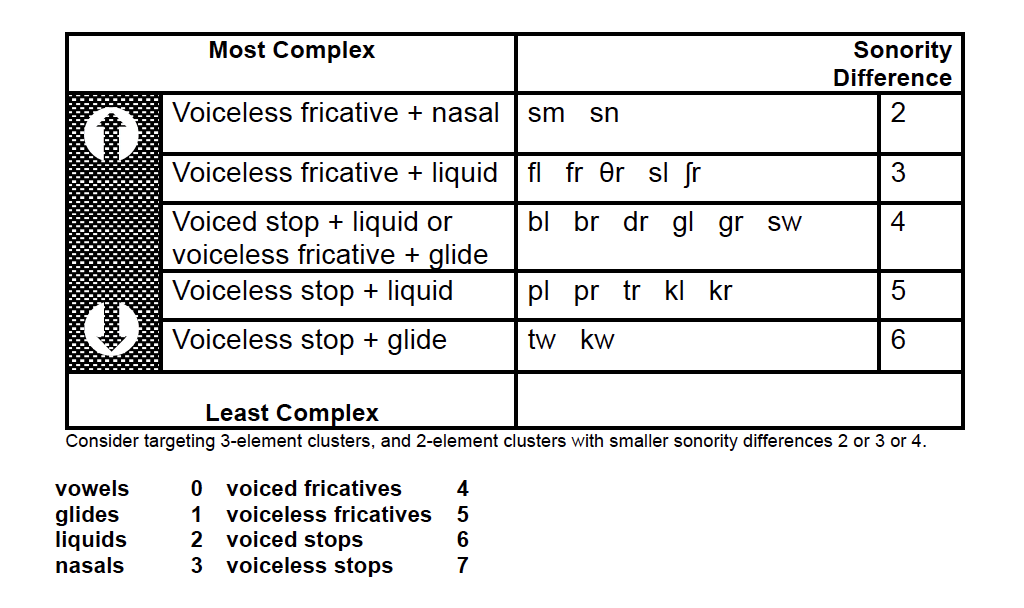
Experimental findings are integrated in discussion of the representation of onset clusters and their course of emergence in phonological acquisition relative to the Sonority Sequencing Principle. Results indicated that children learned adjuncts consistent with patterns of within-class generalization, thereby supporting the view that these sequences are unmarked in structure. Experiment 2 examined the role of adjunct sequences /sp, st, sk/, whose markedness status is questionable given their violation of the Sonority Sequencing Principle. Others who were taught unmarked clusters exhibited limited learning characteristic of within-class generalization, with apparent gaps in sonority sequencing. This claim was validated, in part, by the gradient generalization learning patterns of children who were taught marked clusters. Experiment 1 tested the hypothesis that children abide by the Sonority Sequencing Principle in development, such that the occurrence and use of marked true clusters implies unmarked clusters, but not vice versa. Most of the research has focused on establishing treatment paradigms that result in more ample changes to the child’s phonological system. In two single-subject experiments, we evaluated this principle as applied to the acquisition of onset clusters and adjuncts by children exhibiting functional phonological delays (age in years months: 3 2 to 7 8). Linguistic models of phonological acquisition, structure, and change have been used to predict system level changes in children undergoing treatment for functional (i.e.

The Sonority Sequencing Principle is a presumed universal that governs the permissible sequences of consonants within syllables. The Sonority Sequencing Generalization and the Structure of Consonant Clusters with Trapped Sonorants in Polish Authors Selected contents from this journal.


 0 kommentar(er)
0 kommentar(er)
